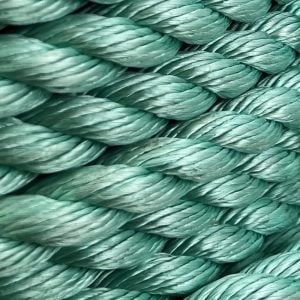Blog, Product Guides & Comparisons
The Difference Between Polysteel Rope and Leaded Polysteel Rope
The Difference Between Polysteel Rope and Leaded Polysteel Rope
If you’re wondering about the difference between polysteel rope and leaded polysteel rope, you’re not alone. These two ropes may look similar, but they behave very differently – especially in water.
Whether you’re working on a fishing boat, managing mooring lines, or just need a tough rope for outdoor use, this quick guide will help you pick the right one.
What Is Polysteel Rope?
Let’s start with polysteel rope. Despite its name, polysteel contains no steel. It’s made from a blend of polypropylene and polyethylene fibres, engineered to be:
-
Strong yet lightweight
-
Resistant to rot, chemicals, and UV damage
-
Floatable – ideal for water use
-
Affordable and easy to handle
Thanks to these qualities, polysteel rope is used in farming, shipping, construction, and countless other industries.
What Is Leaded Polysteel Rope?
The difference between polysteel rope and leaded polysteel rope becomes clear when you look at how they behave in water.
Leaded polysteel rope is made with the same synthetic outer, but a lead core or lead strands are added during manufacture. This gives it extra weight and allows it to:
-
Sink quickly in water
-
Stay submerged – perfect for trawling or netting
-
Remain tangle-free underwater
-
Perform well in tough marine conditions
In short, it’s polysteel – but weighted.
At a Glance: Key Differences
| Feature | Polysteel Rope | Leaded Polysteel Rope |
|---|---|---|
| Steel Content | None | None |
| Weight | Light | Heavier (due to lead) |
| Buoyancy | Floats on water | Sinks |
| Typical Use | Surface or floating jobs | Sub-surface applications |
| Ease of Handling | Very easy to carry | Easier to manage in water |
| Cost | Lower | Slightly higher |
Still Wondering Which Rope to Use?
Here’s a quick tip:
-
Choose standard polysteel rope if you need something that floats – perfect for buoys, boat lines, towing, or general utility work.
-
Choose leaded polysteel rope if you need a rope to stay underwater – ideal for fishing nets, trawl ropes, potting, and moorings.
Both types are tough, durable, and weather resistant – just built for different jobs.
Why Is It Called “Polysteel” If There’s No Steel?
Good question. The name polysteel comes from the rope’s steel-like strength, not its content. It’s entirely synthetic, with no metal involved at all. This helps keep the rope lightweight, cost-effective, and resistant to rust or corrosion.
Final Thoughts
The difference between polysteel rope and leaded polysteel rope mainly comes down to weight and buoyancy. One floats, the other sinks – and both are built to last.
Need help choosing the right rope for your job? Contact our team or check out our full range of ropes – all cut to order and made right here in the UK.

